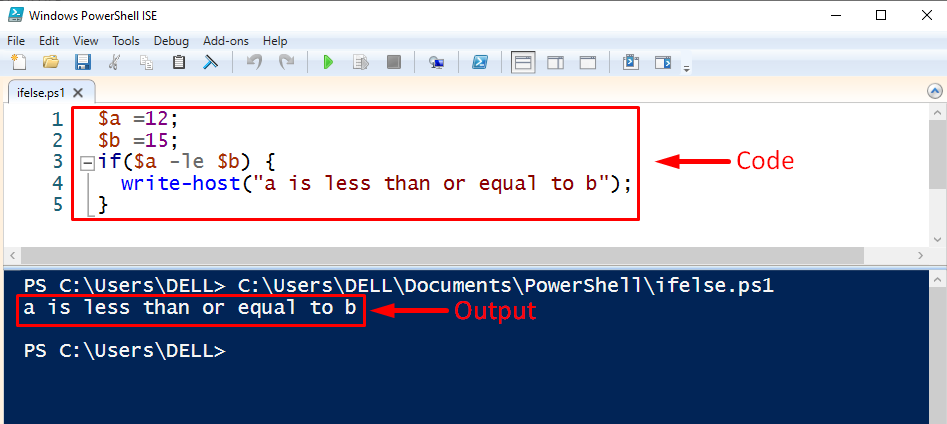This write-up will present a thorough guide for the if-else statements:
- What is if-statement in PowerShell?
- Syntax of if-statement.
- What is if-else statement in PowerShell?
- Syntax of if-else statement.
So let’s get started!
What is if-statement in PowerShell?
The if statement in PowerShell takes an expression/condition in its parenthesis and tests it. Consequently, it will return either a true or false value, if the specified condition is true then the code-block associated with the if-statement will get executed. The if-statement deals with the true condition only, it has nothing to do with the false condition.
Syntax of if-statement
The below-given snippet shows the basic syntax of if-statement in PowerShell:
// Executes only if the given expression is true
}
Let’s consider the below script to understand the working of if-statement in PowerShell:
$b =15;
if($a -le $b) {
write-host("a is less than or equal to b");
}
In this example program, we utilized the if-statement to test an expression, if the returned value is true then the body of if-statement will execute else not:
The output verified the working of the if-statement.
What if the returned value of the specified expression is false? How if-statement will deal with the false value?
$b =15;
if($a -ge $b) {
write-host("a is less than or equal to b");
}
The above script will generate the following output:
The cursor moved to the next line without performing any specific task. It verified that the if-statement doesn’t handle the false conditions.
What is if-else statement in PowerShell?
To tackle the false conditions, the else statement can be used along with the if-statement. In Powershell, if we utilized the combination of if and else statements, as a result, both true and false conditions will be tackled.
Syntax of if-else statement
The below snippet depicts the basic syntax of the if-else statement in PowerShell:
// Executes only if the given expression is true
}
else{
// Executes if the specified expression is not true
}
How to use if-else statement in PowerShell
Below snippet will assist you in this regard:
$b =15;
if($a -le $b) {
write-host("a is less than or equal to b");
}
else{
write-host("a is greater than b");
}
This time we utilized both if and else statements, now if the value of a is less than or equal to the b then body of if-statement will execute otherwise the body of else-statement will execute:
The above snippet verified that the else-statement was executed because the specified condition was false.
Conclusion
In PowerShell, decision-making statements such as if, else, and else-if are used to manage the program’s flow based on different conditions. The if-statement deals with the true condition only while the else-statement deals with the false condition only. Therefore, in PowerShell, if and else statements can be used combinedly to handle both true and false conditions. This write-up explained all the basics of if and else conditions in PowerShell using some suitable examples.



